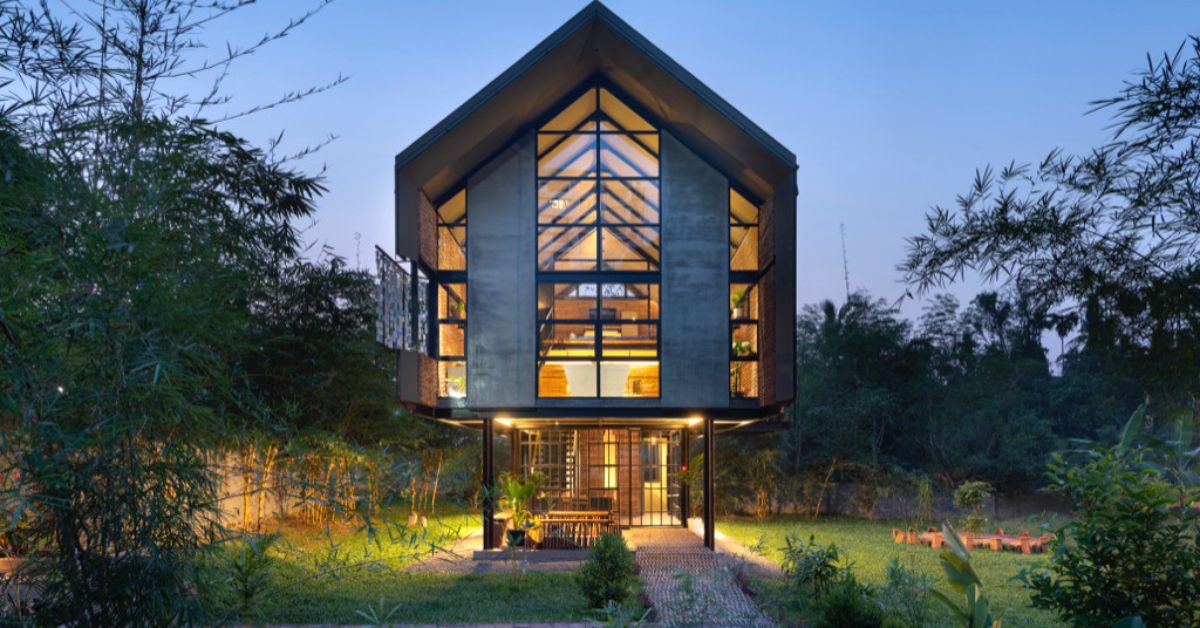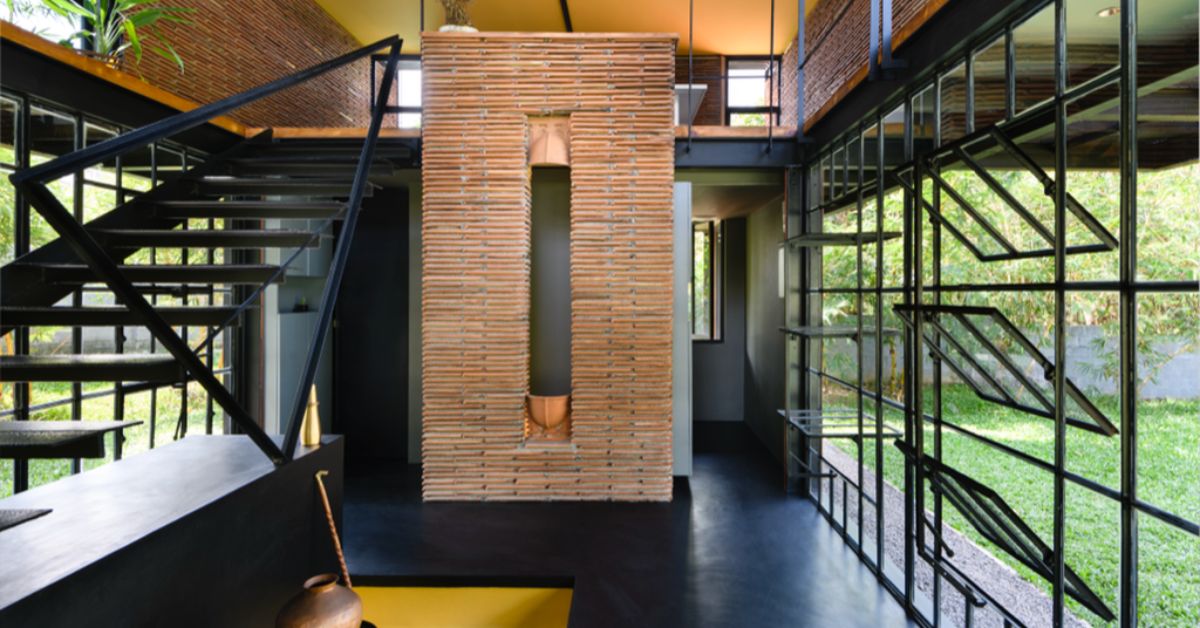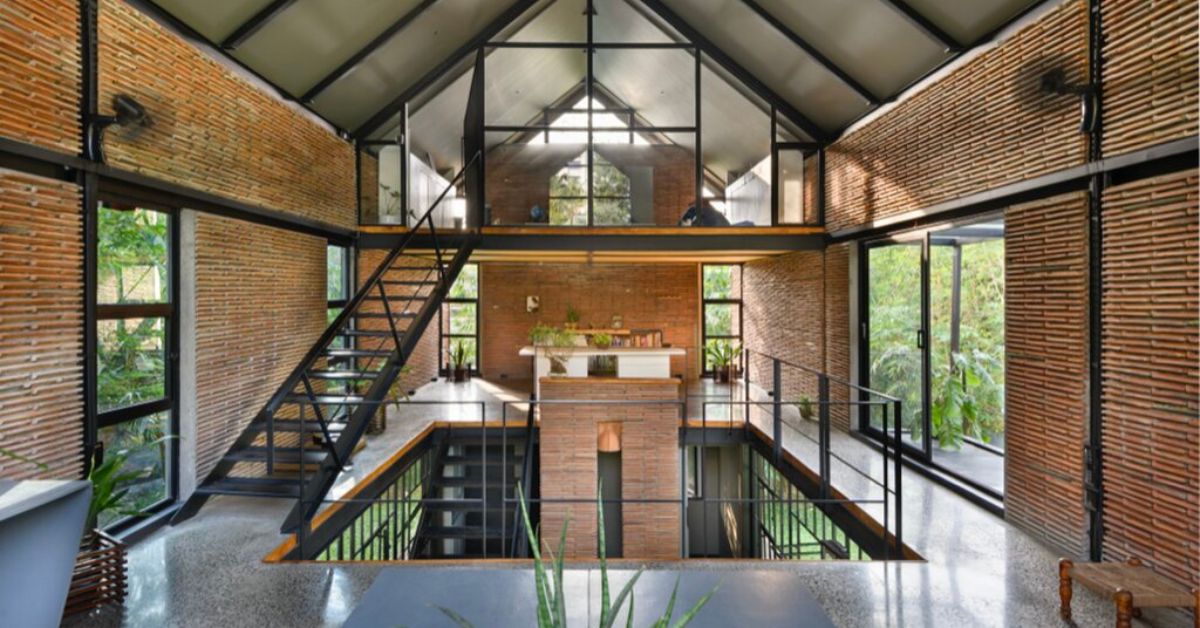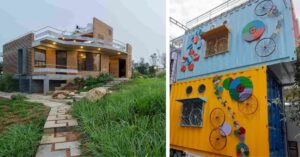Kochi Architect Repurposed Run-Down Factory’s Mangalore Tiles & Steel to Build His Office
While working on rebuilding a run-down factory into a convention centre in Kochi, Koshy P Koshy came across discarded Mangalore tiles and steel frames. He decided to repurpose and upcycle them to build a sustainable office building, which he named Koshish.

From learning to grow organic food and construct eco-friendly homes to using renewable energy, today, people are trying to live in harmony with nature. Taking this thought forward, Kerala’s 40-year-old architect Koshy P Koshy built a sustainable office out of discarded materials from a run-down factory.
It all started when the architect was working on a project of transforming a run-down factory into a convention centre. The tiles and steel from the factory looked like trash to most, but what Koshy saw was an opportunity for a sustainable project.
Koshy’s workspace, named Koshish, was the result of this idea.
Nestled in the heart of nature, the three-levelled building is made out of 90 percent repurposed and upcycled materials — including the Mangalorean tiles and metal rods from the factory, and the wood.
The thought behind the building
“I could see the gold in the trash, and Koshish was born,” says Koshy P Koshy to The Better India.

He continues, “Many friends and family who know me have pointed out how the building is also a reflection of who I am. The Mangalorean tiles are placed on the floor, walls, roofs as well as the exterior of the building to indicate that both I and the building are the same inside out,” he says with a smile.
Hailing from Kerala, Koshy had his primary education in Saudi Arabia before his parents moved to India.
“We came to Kochi, and I completed my secondary education here. And a few years later, I pursued architecture in Bengaluru. I had a practice with my cousin for five years before I decided to start my own,” he shares.
“Deciding to go solo took courage, and a lot of thoughts clouded my mind as my professional life was at a junction. Moreover, it was a phase of transition for me, and Koshish in many ways represents that phase of my life too,” he adds.
Derived from the word koshish, which means “to try”, he explains the thought behind the building.
“The building is truly us trying to be closer to nature and live in harmony with it. It is inspired by my father as the first house he built was named Koshish too. A lot of hard work goes into making a building and Koshish represents all of it,” he says.
The land on which the property is located was owned by his family. “The land was vacant and had greenery and nature all around it. Then, we were working on a project which was originally a run-down factory. We were removing a lot of damaged materials from there, but I observed that many were in quite a good shape,” he says.
“I asked the owners of the factory to reuse the tiles, but they did not want to. But I could see the potential in them,” he adds.

A sustainable project is born out of trash
Upcycling wood and steel and using the Mangalorean tiles was never part of Koshy’s initial plan for his office. The plan was to create a structure that is elevated from the ground to utilise the breathtaking view of the surrounding lush green area.
“When we started, I wanted to make the office a sustainable place and use natural materials as a primary source. But then when I saw the factory, I got this [repurposing] idea,” he says.
“All the tiles cost us close to nothing as the client was in no mood to use them, and I could see the potential. That time, I was working with two people, and we did not even have a drawing of what the place might look like. The whole structure is a testimony of our various trials and errors,” says Koshy.
He adds, “The project was a first for us, but what came as a blessing in disguise was that since all the materials were so old, they had their character. The staircases, windows, doors…they are at least 150 years old. You no longer find such steel sections these days. So, they all came with a history.”
He further shares that when the client from the factory visited the completed building, he was shocked at how they had utilised the discarded materials.
Describing the building, Koshy shares, “The inside and the outside of the building are the same — it has Mangalorean tiles on both sides. The lower level ground is open, and we just have a fish pond and a service area. The above area is where our whole workspace is. The centre of the building also has a courtyard, so there is enough open space.”
The building has huge windows to allow the natural light to flood in. “In the eastern portion, we have a lot of greenery. We wanted to feel like we are in the middle of nature which is why we have glass windows on this side. The windows allow good ventilation, and the tiles themselves help in cooling the place. We won’t need any air conditioning even when the Kerala temperature sores up,” he says.

“The place is not just aesthetically good looking but it is also quite practical. It is so airy because the walls are made with Mangalorean tiles. The face of the building is such that it gets minimum heat from the sun and maximum air circulation. Although temperatures go up a lot in Kerala, I never felt hot in the building,” says Donna George, an employee at Koshish.
The workspace building took a good six months to complete.
Koshy believes in co-existing with nature and hopes to promote this idea as much as he can. If you found our stories insightful, informative, or even just enjoyable, we invite you to consider making a voluntary payment to support the work we do at The Better India. Your contribution helps us continue producing quality content that educates, inspires, and drives positive change. Choose one of the payment options below for your contribution- By paying for the stories you value, you directly contribute to sustaining our efforts focused on making a difference in the world. Together, let’s ensure that impactful stories continue to be told and shared, enriching lives and communities alike. Thank you for your support. Here are some frequently asked questions you might find helpful to know why you are contributing?

“I think a building should be a reflection of the owners. People who live or use the space should feel one with the building. Knowing our building is made with natural materials and has not harmed nature at all is a wonderful feeling; it makes life a lot simpler. People are still running towards new styles and designs, but I am sure they will come back around and embrace living with nature again,” he says.
Edited by Pranita Bhat
This story made me
-
97
-
121
-
89
-
167
















